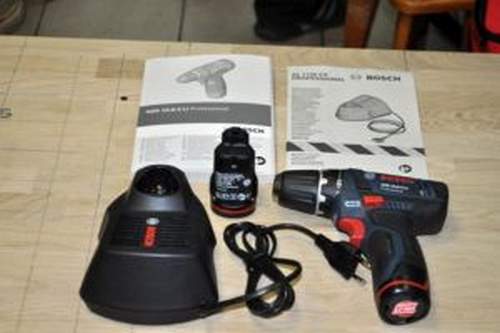Why the Screwdriver Battery Does Not Charge

Like many other electric tools, a screwdriver can work both from the mains and the batteries installed on the device. This is very convenient, since it is possible to use the device in the field. And the network cable does not get underfoot and does not interfere. At the same time, battery charging problems can sometimes occur.
What to do if the screwdriver’s battery does not charge at all or discharges too quickly? To understand this issue, you need to carefully study the device of the instrument charging system. That is what we will do in our article.
Screwdriver batteries: evolution
To ensure autonomous operation of a power tool, three main types of batteries are usually used, which need to be discussed in more detail.
Ni-Cd or Nickel-Cadmium Power Supplies
They have been used for a very long time and are rightly considered the oldest batteries installed on various modern technology. Their main advantages are:
- the lowest self-discharge, due to which the batteries can gather dust for a long time somewhere in the closet, and then work quietly without additional charge;
- good capacity with a very compact size, which ensures long-term autonomous operation of screwdrivers;
- resistance to low temperatures, due to which Ni-Cd elements are often used in all-weather technology;
- low price.
The disadvantages include the need to constantly go through the full cycle of charging and discharging batteries. If they do not charge fully, the so-called memory effect is triggered. The battery works worse and worse, after which it turns off completely.
Ni–Mh or nickel metal hydride power supplies
They are considered an improved analogue of Ni-Cd batteries, but their advantages include only more environmentally friendly production and a slightly reduced memory effect. Basically, this type of battery is inferior to nickel-cadmium. The thing is that they have a very high percentage of self-discharge. To use the battery effectively, you need to constantly charge it, which is why autonomy is completely lost.
Видео: Why the Screwdriver Battery Does Not Charge
Li–ion, or lithium-ion power supplies
These batteries are installed on almost any equipment, including Makita power tools, Interskol, Bosch, as well as numerous gadgets. The list of benefits is as follows:
- extremely high capacity;
- almost complete absence of a memory effect;
- the ability to equip with special controllers that monitor the charge level and count charge-discharge cycles;
- low percentage of self-discharge;
- resistance to high loads, the ability to use in high-power technology.
The disadvantages of lithium-ion batteries are unstable operation in the cold, as well as high cost in comparison with the analogues described above.
How to charge batteries
To cope with the memory effect of nickel-cadmium batteries and extend the life of lithium-ion power supplies, you need to follow several important rules:
- Immediately after buying a screwdriver, you should charge it to the maximum level. If we are talking about Ni-Cd elements, the procedure must be repeated three times in a row.
- The temperature in the room where charging is carried out should be in the range of 10-40 degrees.
- Ni-Mh and Ni-Cd batteries must be disconnected from the mains after charging is complete. Lithium-ion power supplies are equipped with controllers that do this automatically.
- If you do not plan to use the tool for a long time, it is better to remove the batteries and store them separately. At the same time, it is advisable to recharge to the maximum level at least once a month.
How long does it take to charge the battery? If we are talking only about short-term recharge, it is better to spend at least half an hour on it. A full charge should last about 7-8 hours.
Fix Battery Charge Issues
If you strictly follow all the above rules, but for some reason the battery has stopped charging, you need to look for the cause of the problem. To do this, you will have to carry out diagnostics, including the following operations:
- We measure the battery capacity using special equipment. It is possible that he simply has exhausted his working resource and needs to be replaced.
- Check the contacts. Due to their contamination, charging may not be carried out at all or may slow down significantly.
- We attempt to charge and discharge the batteries several times using special devices. Sometimes it helps to restore even a "dead" battery.
- We check the serviceability of the power supply for 12 or 18 volts and replace it if a problem is detected.
- We are testing the electrical circuit to detect any breaks that have led to a deterioration of the battery, and fix the problems.
In the vast majority of cases, malfunctions that cause difficulties with charging the battery can be eliminated on their own. But if no attempts bring the desired result, it is better to turn to specialists for help.